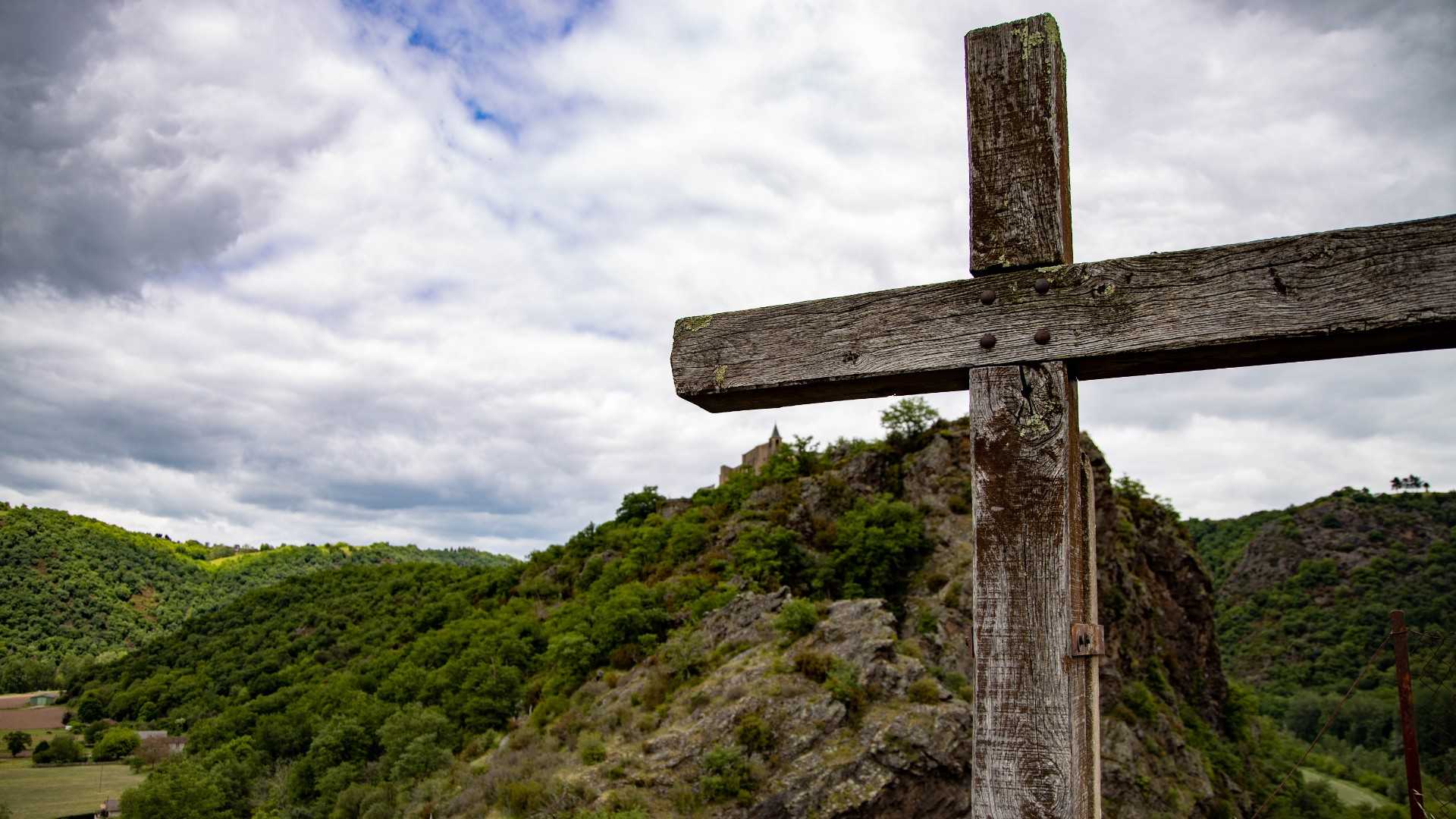Jesus is dead, embalmed and buried in a guarded, sealed tomb. The disciples, fearful for their lives, are in hiding. Having given up hope, they weep, lament, lick their wounds and ponder their future. Resigned to their fate, they prepare to return to their old way of life.
I. The Burial of Jesus (Matt 27:57–66; Mk 15:42–47; Lk 23:50–56; Jn19:38–42)
A. The grave is chosen.
- Joseph of Arimathea
- “A disciple of Jesus” (Matt 27:57), “a secret one, for fear of the Jews” (Jn 19:38).
- “A prominent member of the Council” (Mk 15:43).
- “Waiting for the kingdom of God” (Mk 15:43).
- “A good and righteous man (he had not consented to their plan and action)” (Lk 23:50–51).
- “He gathered up courage and went in before Pilate” (Mk 15:43).
- “And Nicodemus came also” (Jn 19:39).
- “His grave was assigned with wicked men, yet he was with a rich man in his death” (Is 53:9).
B. Jesus is embalmed.
- Nicodemus and Joseph of Arimathea (Jn 19:38–40)
- “A mixture of myrrh and aloes, about a hundred pounds weight” (v39).
- “They took the body of Jesus, and bound it in linen wrappings with the spices, as is the burial custom of the Jews” (v40).
C. The tomb is guarded on Saturday (Matt 27:62–66).
- Roman guard, numbering from 10-30 soldiers (McDowell, p. 219).
- Roman seal (v66), the personal stamp of Pilate himself, the symbol of Roman power and authority. It was a high crime even to deface it (McDowell, p. 217).
II. The Resurrection (Matt 28:1–10; Mk 16:1–8; Lk 24:1–12; Jn 20:1–18). Did it really happen? Was it a vision?
A. The Body was missing.
- This fact was not contested by Jesus’ enemies.
- No body was ever produced.
- The disciples couldn’t each have had a vision of an empty tomb.
B. There’s no evidence supporting a natural explanation.
- The Swoon Theory
- Jesus was dead, attested to by a Roman centurion (Mk 15:44–45) and other witnesses.
- Cool tombs don’t revive critically wounded people.
- Jesus was already embalmed.
- The disciples stole the body.
- The plot of the Jewish leadership: “You are to say, ‘His disciples came by night and stole Him away while we were asleep’ ....And this story was widely spread among the Jews, and is to this day” (Matt 28:13, 15).
- The disciples had no motive.
- They had scattered because of fear of capture, Peter even denying Christ. Why would they take on a Roman guard?
- They were all convinced Jesus was gone.
- The disciples couldn’t have overcome or outwitted the Roman guard.
C. Significant evidence supports a resurrection.
- The evidence of the grave clothes.
- “He [Peter] beheld the linen wrappings lying there” (v6). Lit. blepo, to perceive and understand.
- Possibly, a “cocoon” out of which the body had vanished.
- It convinces them of the resurrection: “He saw and believed” (Jn 20:8).
- If the body was stolen the wrappings wouldn’t be there or neatly in a pile.
- Notice the detail John gives. He even notes who got to the tomb first.
- “He [Peter] beheld the linen wrappings lying there” (v6). Lit. blepo, to perceive and understand.
- The evidence of the transformed disciples.
- Originally they disbelieved.
- They were skeptical and had to be convinced.
- “And these words appeared to them as nonsense, and they would not believe them” (Lk 24:11).
- The evidence of the physical appearances of Jesus (about 10 references).
III. Post-Resurrection Appearances (Jesus’ appearance is somehow changed).
A. Mary Magdalene (Jn 20:11–18)
- Seven demons cast out.
- Deep emotional attachment
- Extremely devoted and faithful
- This is not invented, but a mark of genuineness.
- Woman’s testimony was not trusted.
- You can’t cling to a vision.
B. Disciples (Jn 20:19–25)
C. Road to Emmaus (Lk 24:13–35)
D. Thomas (Jn 20:26–29)
Note: those who don’t believe, Jesus invites to touch Him.
E. James: “...then He appeared to James...” (1 Cor 15:7).
F. Sea of Galilee (Jn 21:1–11)
- Greek present tense, possibly a return to fishing as a way of life.
- Once again, John remembers the details (153 fish).
- Peter is restored.
G. “After that He appeared to more than 500 brethren at one time, most of whom remain until now, but some have fallen asleep” (1 Cor 15:6).
- Is this the product of a midnight dream?
- Bill Counts: “Do we think that these people just imagined all of this? Can we honestly look at all of these accounts in the Gospels and say that these things—where they’re talking with Him, where He’s feeding them, where they’re feeding Him, where they touch Him, where they cling to Him, where they listen to sermons that He preaches, where it happens not to one person but to many people over a period of 40 days—can we honestly imagine that this is simply the product of some mystical imagination? There is no way that such a thing could be. It is very obvious that the writers of the Gospels believed that [Jesus] rose from the dead. They believed nothing else and all of the way through the NT there is no other message that is presented.”
IV. The Great Commission
A. The command:
- “And Jesus came up and spoke to them, saying, ‘All authority has been given to Me in heaven and on earth. Go therefore and make disciples of all the nations, baptizing them in the name of the Father and the Son and the Holy Spirit, teaching them to observe all that I commanded you; and lo, I am with you always, even to the end of the age’” (Matt 28:18–20).
- “It is not for you to know times or epochs which the Father has fixed by His own authority, but you shall receive power when the Holy Spirit shall come upon you; and you shall be My witnesses both in Jerusalem, and in all Judea and Samaria, and even to the remotest part of the earth” (Acts 1:7–8).
B. The ability: Jesus
- “All authority has been given to Me in heaven and on earth. Go therefore...” (in Jesus’ authority).
- “You shall receive power when the Holy Spirit shall come upon you...” (with the power of the Holy Spirit).
- “I am with you always, even to the end of the age” (with a conscious awareness of His presence).
C. The goal: “make disciples”
- “Baptizing them in the name of the Father and the Son and the Holy Spirit...” (salvation).
- “Teaching them to observe all that I commanded you...” (growth).
D. The extent: “all the nations”
- Jerusalem (their own kind)
- Judea and Samaria (culturally near)
- The remotest part of the earth (culturally distant)
E. How long: until Jesus returns.
- “Men of Galilee, why do you stand looking into the sky? This Jesus, who has been taken up from you into heaven, will come in just the same way as you have watched Him go into heaven” (Acts 1:11) (get to work!).
- “...to the end of the age” (don’t stop until Jesus returns).

